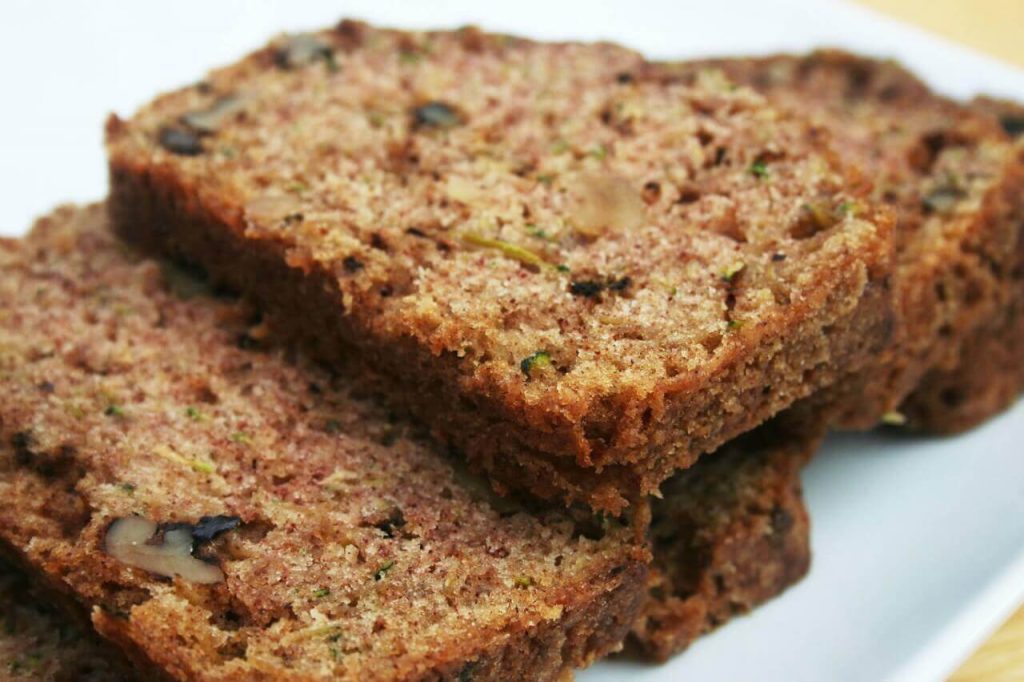If you’re looking for a healthier alternative to all-purpose flour, look no further than zucchini flour! Making your own zucchini flour is easy, cost-effective, and better for you than store-bought options. Plus, it tastes delicious! Here’s a step-by-step guide on how to make zucchini flour from the comfort of your kitchen.

Table of Contents
Step 1: Preparing the Zucchini
The first step in making zucchini flour is preparing the zucchini.
Start by washing your zucchinis and patting them dry.
Then, using a vegetable peeler, remove the skin from each one and discard it.
Next, cut off both ends of each zucchini and discard those too.
Finally, chop the remaining pieces into small cubes that will fit into your food processor or blender.
Step 2: Blending the Zucchini
Once your zucchini is chopped, place them in a food processor or blender and blend until they form a smooth paste.
If you don’t have either of these appliances, you can also grate the zucchini with a box grater or use a potato masher to mash them into smaller pieces.
Regardless of which method you use, be sure to blend or mash the pieces until there are no large chunks left.
Step 3: Drying the Zucchini
After blending or mashing your zucchinis until they are completely smooth with no large chunks left, spread them out onto parchment paper-lined baking sheets and bake in an oven set to its lowest temperature (usually around 170 degrees Fahrenheit).
Bake for 8-10 hours—or overnight—until completely dry and crumbly to the touch. When finished baking, let cool for about 10 minutes before handling or transferring to an airtight container for storage.
FAQs
How to dehydrate zucchini chips?
Dehydrating zucchini chips is a great way to preserve their crunchy texture and intense flavor. To dehydrate zucchini chips, you will need the following supplies: a slicing tool such as a mandoline or food processor, parchment paper, an oven or dehydrator, and sea salt (optional).
To begin, wash the zucchini and dry it with a paper towel. Slice the zucchini into thin slices, roughly ⅛ inch thick, using a mandoline or food processor. Line baking sheets with parchment paper and spread the slices out in an even layer on top. If desired, sprinkle sea salt on top of the chips before cooking.
For oven-drying, preheat the oven to its lowest setting (generally no lower than 175°F). Place the baking sheets in the oven and allow them to dry for 2-4 hours. Check on the chips every hour or so and remove any that are done earlier.
If using a dehydrator, place the baking sheets on the trays of your dehydrator. Set the temperature to 135°F and cook for 10-12 hours or until desired crunchiness is reached.
Once fully dehydrated, allow the chips to cool completely before storing in an airtight container at room temperature for up to 4 weeks.
Read more: How Many Calories In Zucchini Bread?
What to eat with zucchini bread?
Zucchini bread can be paired with a variety of different dishes to create a delicious meal. Some popular choices include butter, cream cheese, and jam for breakfast or brunch.
For lunch or dinner, try serving zucchini bread alongside salads and soups, grilled meats and fish, or complementary side dishes such as roasted vegetables or mashed potatoes.
For a sweet treat, top zucchini bread with melted chocolate or your favorite ice cream.
No matter what way you choose to serve it, zucchini bread is sure to make an impression at any meal.

Can you use olive oil in zucchini bread?
Yes, olive oil is a great substitute for butter or other vegetable oils in zucchini bread.
Not only does it add moisture to the bread, but it also adds a subtle flavor that can enhance the taste of other ingredients.
When using olive oil in zucchini bread, it’s important to remember that extra-virgin olive oil has a stronger flavor than regular olive oil, so it should be used sparingly.
For best results, use about half the amount of oil recommended in the recipe and add more if necessary.
Additionally, it’s important to note that baking times may need to be adjusted when using olive oil as a substitute since it has a lower smoke point than butter or other vegetable oils.
Using olive oil in zucchini bread can be a great way to add flavor and moisture to your baking. Keep in mind that extra-virgin olive oil has a stronger flavor, so use it sparingly, and adjust the baking time as necessary.
With these tips in mind, you can enjoy delicious zucchini bread made with olive oil!
Conclusion
Making your own homemade zucchini flour is surprisingly easy! With this step-by-step guide as your reference point, you can enjoy freshly made high-quality and nutrient-rich flour right in your own kitchen without having to purchase expensive store-bought options! So grab some fresh organic zucchini today and start making your own delicious—and healthy—zucchini flour! Happy baking!
References:
https://fsct.modares.ac.ir/article-7-23125-en.html
https://www.ddvculinary.com/cookbooks_pdf/The-Creative-Homemaking-Guide-To-Zucchini-Recipes.pdf








